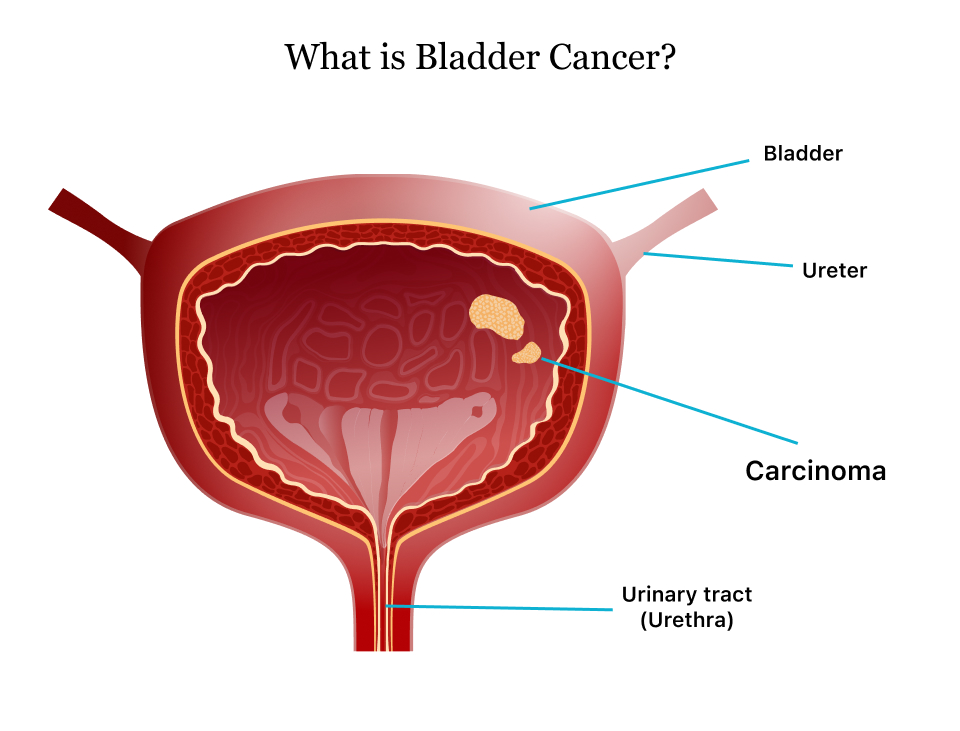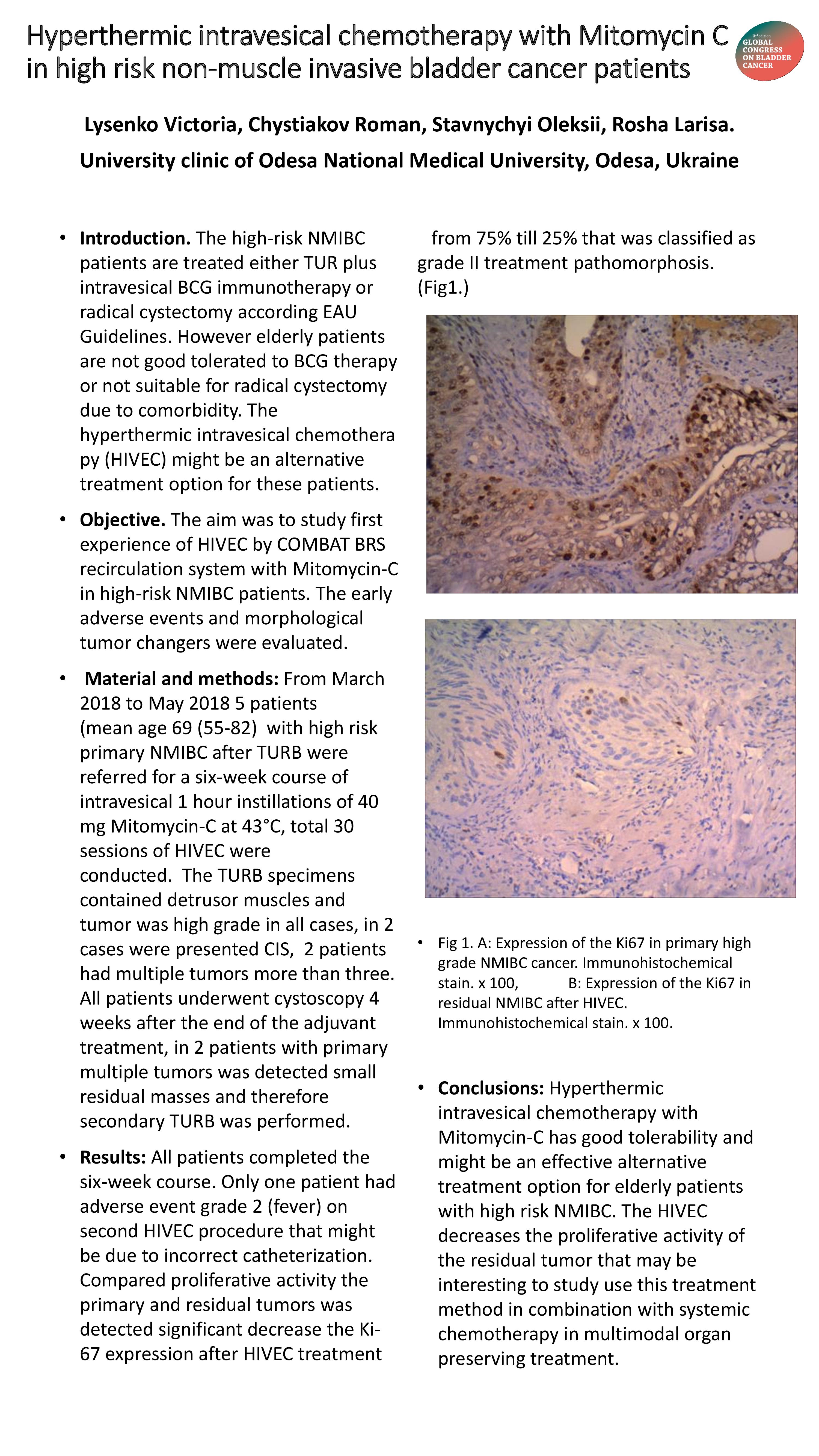Chemotherapy into the bladder is a treatment for early bladder cancer. This review will discuss risk stratification of patients with NMIBC and role of intravesical therapies in reducing recurrence and progression of disease in these patients.

Multimodality Approaches For Urothelial Carcinoma Of The Bladder Download Scientific Diagram
Per the American Urological Association Guidelines for Diagnosis and Treatment of Non-Muscle Invasive Bladder Cancer NMIBC a single perioperative dose of intravesical chemotherapy should be considered for patients with low- or intermediate-risk disease.

Intravesical chemo for bladder cancer. An advantage of Mitomycin C is that it is not easily absorbed through the lining of the bladder and into the blood and thus less risky than chemotherapy given intravenously. If you have been diagnosed with bladder cancer intravesical chemotherapy may be recommended as part of your treatment plan. Non-muscle-invasive bladder cancer NMIBC remains one of the most common malignancies and is associated.
Some studies suggest that immunotherapy works best. Management strategies for intravesical toxicities ideally improve patient. Side effects from the drug.
Patients with G3 bladder tumors Stage Ta or T1 were treated with combined intravesical chemotherapy with mitomycin-C and local radiofrequency hyperthermia of the bladder wall. You have it through a flexible tube called a catheter which goes into your bladder. Bladder cancer although it is the fourth most common cancer in the United States is one of the least lethal cancers and there are about 540000 US survivors7 Nonmuscle-invading tumors account for about 70 to 80 of cases8 These tumors have a high recurrence rate 40 to 80 and can progress to muscle-invading and metastatic disease.
It helps prevent the cancer coming back recurrence. Sequential intravesical gemcitabine and mitomycin C chemotherapy regimen in patients with non-muscle invasive bladder cancer. Intravesical chemotherapy given immediately after surgery for nonmuscle-invasive bladder cancer NMIBC is associated with a decrease in.
1 The data for gemcitabinedocetaxel combination therapy are promising but there are currently no trials. Intravesical chemotherapy is used mainly for low- to medium-risk non-muscle-invasive bladder cancer. Intravesical chemotherapy is commonly used after a patient with non-muscle-invasive bladder cancer has had a surgical procedure called transurethral resection of bladder tumor TURBT.
Intravesical therapy for nonmuscle invasive bladder cancer decreases recurrence and progression but carries a high risk of side effects which limit patient adherence. For this treatment the chemo drug is put right into the bladder. Repeated cystoscopy with biopsy and.
This method cant reach cancer cells outside the bladder lining or in other parts of the body so its not suitable for muscle-invasive bladder cancer. The patients were treated with either a prophylactic protocol 40 mg mitomycin-C after complete transurethral resection of all tumors or with an ablative protocol 80 mg mitomycin-C when visible tumor was seen on video-cystoscopy or bladder. Intravesical chemotherapy or immunotherapy may used for intermediate non-invasive bladder cancers.
This form of chemotherapy involves delivering liquid cancer-fighting medication directly to the bladder through a catheter. Adjuvant intravesical therapy with either immunotherapy or chemotherapy has been shown to reduce recurrence andor progression in appropriately selected patients through immunostimulation or direct cell ablationAreas covered. 2 For intermediate- or high-risk NMIBC guidelines recommend an induction course of bacillus Calmette-Gurin BCG as well as risk.
Another intravesical therapy uses Mitomycin C an anti-cancer drug that has been shown to be effective after the TURBT in reducing the number of recurrences of bladder tumors by as much as 50. 1The James Buchanan Brady Urological Institute Johns Hopkins University School of Medicine Baltimore MD USA. Its done once a week for 6 weeks and may be repeated for another 6 weeks if needed.
The recurrence rate of non-muscle invasive bladder cancer NMIBC is high despite intravesical treatments. Appropriate management of the toxicities from intravesical therapy requires consideration of the agent used the side effects experienced and the timing of those side effects. Chemo for bladder cancer can be given in 2 different ways.
Joice GA 1 Bivalacqua TJ 1 Kates M 2. Optimizing pharmacokinetics of intravesical chemotherapy for bladder cancer. Your doctor may call this treatment intravesical chemotherapy.
After a 4- to 6-week break maintenance treatments are then done for at least 1 year. In the SWOG S0353 phase II trial intravesical maintenance gemcitabine was used for BCG refractory non-muscle invasive bladder cancer with a 1-year recurrence free survival rate of only 28 which decreased to 20 at 2-years. Importantly patients are frequently unfit or unwilling to undergo a recommended radical cystectomy when standard intravesical treatments fail due to the substantial risk of morbidity and mortality.
Breyer BN Whitson JM Carroll PR et al. This type of chemo is used for bladder cancer thats only in the lining of the bladder. What are the alternatives.
Its described in Intravesical Therapy for Bladder Cancer. This is called induction therapy. Having intravesical chemotherapy reduces the chance of the cancer coming back or spreading into the deeper layers of the bladder.
Instillation of an anti-cancer drug usually Mitomycin C or Epirubicin into your bladder through a catheter pictured for aggressive multiple or recurrent non-muscle invasive cancer of the bladder. The most common drugs used in intravesical chemotherapy for bladder cancer are thiotepa and mitomycin. For these patients radiofrequency-induced hyperthermia combined with intravesical chemotherapy.
During this procedure the surgeon removes cancer cells from the lining of the bladder using a small thin instrument inserted into the bladder through the urethra. Because of the long-term survival and.

Bladder Cancer Patient Information

Optimizing Pharmacokinetics Of Intravesical Chemotherapy For Bladder Cancer Nature Reviews Urology

Bladder Cancer Treatment Pdq Pdq Cancer Information Summaries Ncbi Bookshelf

Bladder Cancer Treatment Pdq Pdq Cancer Information Summaries Ncbi Bookshelf

Study Treatment Schema And Antitumor Activity In Bbn Induced Mause Download Scientific Diagram

Scielo Brasil Nanopharmaceuticals And Their Applications In Bladder Cancer Therapy A Mini Review Nanopharmaceuticals And Their Applications In Bladder Cancer Therapy A Mini Review

Treatment Algorithm For Non Muscle Invasive Bladder Cancer All Of The Download Scientific Diagram

Tumor Immune Microenvironment Based Classifications Of Bladder Cancer For Enhancing The Response Rate Of Immunotherapy Molecular Therapy Oncolytics

Bladder Cancer Treatment Pdq Pdq Cancer Information Summaries Ncbi Bookshelf

Bladder Cancer Symptoms Causes Survival Rate And Treatment

Bladder Cancer Treatment Pdq Pdq Cancer Information Summaries Ncbi Bookshelf

Treatment Of High Grade Non Muscle Invasive Bladder Carcinoma By Standard Number And Dose Of Bcg Instillations Versus Reduced Number And Standard Dose Of Bcg Instillations Results Of The European Association Of Urology Research Foundation

Systematic Review Of The Therapeutic Efficacy Of Bladder Preserving Treatments For Non Muscle Invasive Bladder Cancer Following Intravesical Bacillus Calmette Guerin European Urology

Hyperthermic Intravesical Chemotherapy With Mitomycin C In High Risk Non Muscle Invasive Bladder Cancer Patients

Bladder Cancer Overview Symptoms Diagnosis Treatment

Endoscopic Molecular Imaging Plus Photoimmunotherapy A New Strategy For Monitoring And Treatment Of Bladder Cancer Molecular Therapy Oncolytics

Agents Previously Used For Intravesical Therapy Of Bladder Cancer Download Table

